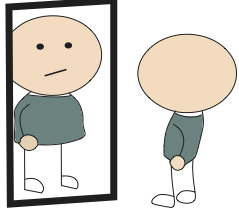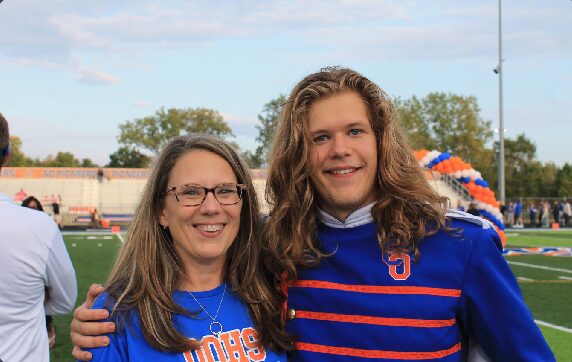
writing: Caroline Albert, Rachel Lehman, & Achintya Perumal
Design: Teresa Christian
permission to print: Student Database
Within Olentangy Local Schools, there are many women in leadership positions to celebrate. Not only are their positions highly deserved, but they also serve as role models and inspirations for other women and young students.
Nancy Freese, the current Director of Human Resources, has a long history with the Olentangy district. She is an Olentangy lifer who attended school when there was only one building for students K-12 called the Shanahan Complex.
“Back then, when we weren’t passing levies and we had leaky roofs, there were core people who believed so much in the foundation of this district who made me want to move my children back home and come back to my roots,” Freese said.
When Freese returned, she became a teacher at Olentangy High School, then she taught at Orange High School when it opened where she was promoted to assistant principal. She was assistant principal at Shanahan Middle School and eventually became the principal at Liberty Middle School. From there, she was promoted to assistant director of human resources at central office, and as of this year, advanced to director of human resources.
“From identifying candidates who we think could be a really good fit for Olentangy whether it be food service, bus drivers, secretaries, custodians, teachers, and administrators. From there, we work really hard to create the best employee experience possible,” Freese said.
Olentangy Local Schools has grown tremendously within the last decade. It is the fourth largest school district in the state with enrollment of students increasing by 5,000 over the past ten years, according to delgazette.com.
“I see that with growth is a lot of opportunity for everyone. I see myself being a role model for females to be able to be anything they want to put their mind to. The sky’s the limit,” Freese said.
Jaclyn Roscoe is the assistant director of pupil services/preschool. She oversees the seven Olentangy preschool locations which include about 130 staff and 550 students and is involved with professional development and hiring staff.
“I’ve had many different within the district including being a second grade teacher at Tyler Run Elementary, assistant principal at Alum Creek elementary, and principal at Glenn Oak elementary,” Roscoe said. “I’ve also been on the report card committee, the union representative for teachers, and worked on data analysis and standardized testing for kindergarten through high school principals.”
Additionally, it’s important for students to see themselves represented by staff within the district
“Just like racial and cultural differences, I think it’s important for kids to see gender differences in leadership positions because it’s important to see people that represent them,” Roscoe said.
Another female leader in the district is Karen Sedoti. She has previously worked in secondary and higher education and served as the assistant principal at Olentangy Orange High School from 2012 to 2018. Currently, she is the principal of Olentangy Academy that includes the STEM Academy, Teacher Academy, and Academy for Community Transition.
“I recognize there is unique responsibility as a woman in a leadership position. For me, there is a natural inclination to lead with these characteristics in mind, and each one plays a vital role in leading,” Sedoti said.
It may come as a misconception that women are outnumbered within the district. Out of the 16 elementary schools, eight have female principals as well as 13 assistant principals. Out of all of the principals at the high schools in addition to the OASIS and STEM buildings, three out of the six of them are women.
“Every leader comes with a passion to serve, to inspire, to empower, and to lead with integrity and teamwork while working towards two of Olentangy’s strategic goals – overcoming non-academic barriers and creating a culture of inclusive excellence,” Sedoti said.
Olentangy Local Schools is full of many accomplished leaders, many of which are women. With the growth of the community comes more opportunities for all.
The world today was built off of the backs of men and women alike. However, society tends to not tell every side of the story. Many achievements contributed to history by women have been overlooked or ignored due to prejudices prevalent throughout society for centuries.
However, Women’s History Month is a way to celebrate women’s accomplishments and highlight moments in history that were overlooked.
The month-long celebration started off as International Women’s Day on March 8, and has been celebrated since 1911. In 1980, President Jimmy Carter extended this day-long celebration to become Women’s History Week, making sure it aligned with the international holiday.
Women’s History Month was first put into law in 1987 “when Congress passed Public Law 100-9 and then passed subsequent resolutions requesting that the U.S. president make an annual declaration. Since 1995, each U.S. president has declared March to be Women’s History Month,” according to EDSITEment, a website run by the government to educate readers about humanities in America.
Since then, “Women’s History Month is a time to recognize and remember all the important things that women did and still do for the world,” junior Kyleigh? Jochum said.
The importance of sharing accomplishments of minority groups is to show the world that history has more stories and perspectives to it than what is typically taught. Learning about people who have different experiences helps bring forth respect for people of different backgrounds, and Women’s History Month is a way the world can do that for women.
“History can be viewed from so many different lenses, so all of us can learn from women who have fought to change the status quo and made societies more accepting and accessible for women of all backgrounds,” Social Studies Teacher Leslie Hosgood said.
There are many stories out there about women who have made great contributions to history. There are many well-known stories of women who have made history; however a lot remain uncovered leaving the events to fade into the past. Women’s History Month is when some of these stories are looked at again and give these women the recognition for their contributions to history.
One woman who made great contributions in American history is Abigail Adams. Adams was one of the first women to stand up for women’s rights in America. Adams’ did this by writing a letter to her husband, John Adams, while he was away attending the First Continental Congress trying to gain independence from Great Britain.
She wrote, “I desire you would Remember the Ladies, and be more generous and favorable to them than your ancestors.” Adams’ full letter along with this excerpt can be found online at the National Constitution Center, an organization that keeps records of original documents related to America gaining independence.
Abigail Adams “stood out to me” as a historical figure Jochum said.
Abigail Adams’ letter was one of the very first steps to women gaining suffrage years later in 1920, which is the reason why it is so important. Although it was a small action, her words in her personal letter are greatly recognized and appreciated today due to the fact that few people were concerned about women’s rights at the time.
“In our U.S. History courses, we usually spend a lot of time focusing on the women’s suffrage movement. Although the 19th Amendment is incredibly important, it did not grant women equality with men overnight,” Hosgood said.
Many women in history have fought in order to achieve equal rights for women. These women have not only fought for the right to vote but also to prove that they are just as capable. Some more women who have fought for these rights includes: Rosa Parks, Sojourner Truth and her famous “Ain’t I a Woman” speech, Elizabeth Blackwell the first woman to graduate from medical school, Amelia Earhart, Billie Jean King’s famous tennis match the Battle of the Sexes, Jeannette Rankin the first women sworn into Congress, and many more.
In the end “the most significant contributions of women in history happen when they build community, organize, and inspire others. Any major movement for change, including the various women’s liberation movements throughout history, are driven by people recognizing that there is an issue and bringing together groups of people to fight for change in attitudes and laws,” Hosgood said.
There are so many other stories out there about extraordinary women and their achievements. If someone needs an excuse to learn more about women’s contributions to history, March is the perfect time to do so.


